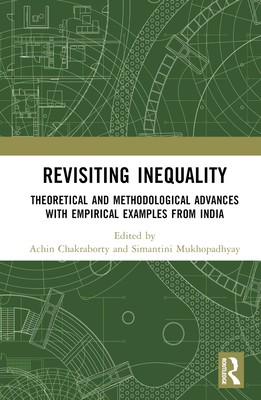
- We will send in 10–14 business days.
- Publisher: Routledge Chapman & Hall
- ISBN-10: 1032348240
- ISBN-13: 9781032348247
- Format: 15.6 x 23.4 x 1.4 cm, hardcover
- Language: English
- SAVE -10% with code: EXTRA
Revisiting Inequality (e-book) (used book) | bookbook.eu
Reviews
Description
This volume discusses the current state of knowledge on the conceptual understanding of inequality. The book poses a range of empirical puzzles in the Indian context and examines inequalities across categories of the region of residence, caste and sex, using a fascinating range of outcome indicators, comprising education, health, earnings, self-employment and crime.
The empirical chapters of this volume use various large-scale secondary data sources to expose the deep-rooted, structural inequalities in the Indian society. It answers some of the pertinent questions around inequality such as why do the backward regions of India continue to remain backward, both in terms of economic and human development indicators? Why do enterprises owned by backward caste individuals have systematically lower business earnings? Are backward castes and women more likely to face crime when their relative status improves? How do the circumstances that children find given at birth influence their learning outcomes etc.
The book will be of interest to teachers, students, and researchers of economics of education, development studies, development economics, and Indian economics. It will also be useful for policymakers, academicians, and anyone curious to learn about inequality.
EXTRA 10 % discount with code: EXTRA
The promotion ends in 20d.15:33:35
The discount code is valid when purchasing from 10 €. Discounts do not stack.
- Publisher: Routledge Chapman & Hall
- ISBN-10: 1032348240
- ISBN-13: 9781032348247
- Format: 15.6 x 23.4 x 1.4 cm, hardcover
- Language: English English
This volume discusses the current state of knowledge on the conceptual understanding of inequality. The book poses a range of empirical puzzles in the Indian context and examines inequalities across categories of the region of residence, caste and sex, using a fascinating range of outcome indicators, comprising education, health, earnings, self-employment and crime.
The empirical chapters of this volume use various large-scale secondary data sources to expose the deep-rooted, structural inequalities in the Indian society. It answers some of the pertinent questions around inequality such as why do the backward regions of India continue to remain backward, both in terms of economic and human development indicators? Why do enterprises owned by backward caste individuals have systematically lower business earnings? Are backward castes and women more likely to face crime when their relative status improves? How do the circumstances that children find given at birth influence their learning outcomes etc.
The book will be of interest to teachers, students, and researchers of economics of education, development studies, development economics, and Indian economics. It will also be useful for policymakers, academicians, and anyone curious to learn about inequality.


Reviews